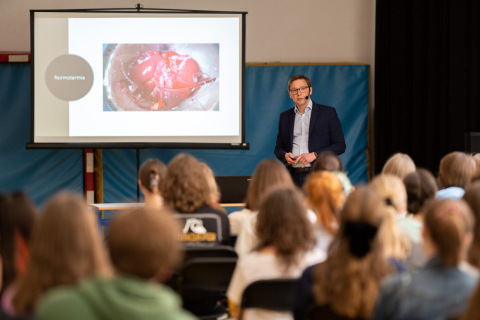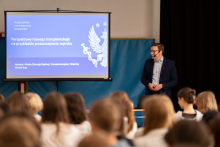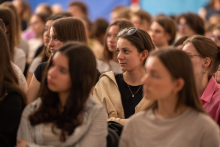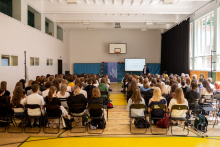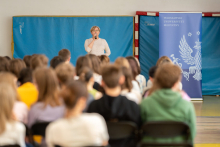Prof. Grąt's speech was entitled "Prospects for the development of transplantology on the example of liver transplantation." However, the speech was not only about the future, but also about the past.
Circulation sustains life in the organ
It was invented decades ago that to reduce the risk of damage to the organ that will be transplanted to the recipient - it is necessary to cool the organ. This reduces the metabolic rate and reduces the formation of harmful metabolic products.
- That's why the gold standard in transplantation for many years was the so-called static hypothermia, i.e. holding the organ in a cooling solution of special composition. It was only in the 21st century that the concept of organ perfusion became widespread - said Prof. Grąt. - It involves restoring the circulation. We have a fluid, some kind of carrier, which delivers oxygen to the organ and is able to maintain its function - the professor explained.
Although the concept of perfusion seems new, its roots go back 120 years. Back then, a French physician - M. Le Gallois - conducted many, sometimes controversial experiments that proved that it was circulation that sustained life.
The latest method to store liver for transplantation
Today, normothermic perfusion can be used for liver transplants. It consists of placing the liver in a special machine that makes it possible to reproduce blood flow in the organ and observe how it functions outside the human body.
- A fantastic method, not available before - says Prof. Grąt. - It allows us to assess outside the recipient's body whether the liver, once implanted, will work. If the risk is high, the transplant should be abandoned.
One organ for two people
The problem of transplantology not only in Poland, but worldwide, is the insufficient number of organs that can be used for transplantation. That's why scientists are looking for more and more effective ways to make better use of those that appear.
- Today we are already able to divide a liver of adequate quality, while maintaining an acceptable level of risk. In this way, we can save the lives of two adult patients. This year in our department we did the first such transplant in Poland - stressed Prof. Grąt.
What else is new in liver transplantation
New in liver transplantation are minimally invasive, laparoscopic techniques.
- We are replacing a large incision with several small incisions through which we are able to harvest liver fragments, even from living donors - says Prof. Grąt.
Transplantation oncology or cancer transplantation is also experiencing tremendous growth. - The very concept of transplantation in oncology patients was once unthinkable - recalled Prof. Grąt. And he explained that it involved immunosuppression, which the patient had to take to prevent organ rejection. Weakening of the immune system caused the cancer to recur and spread.
- However, we now have advances in immunosuppressive treatment, it already works more selectively and does not carry as much risk. In addition, our knowledge of tumor biology makes us better able to define the criteria - which liver tumors are eligible for transplantation and which are not. In our clinic, before we decide on transplantation in the case of cancer, we assess the risk of recurrence and only then decide whether we can qualify the patient for transplantation - the professor said.
After the lecture, the high school students asked many more questions. They were curious about whether it was possible to print a liver in a 3D printer, why the hypothermic method is sometimes used and not the normothermic method since the latter is better, why children have better results after transplantation.
The meeting was held at the 9th Klementyna Hoffmanowa High School in Warsaw. It was attended by high school students not only from Klementyna Hoffmanowa High School, but also from the King Władysław IV High School No. 8 and the Stefan Batory High School. They were students of the fourth, third and second classes with a biological and chemical profile.
